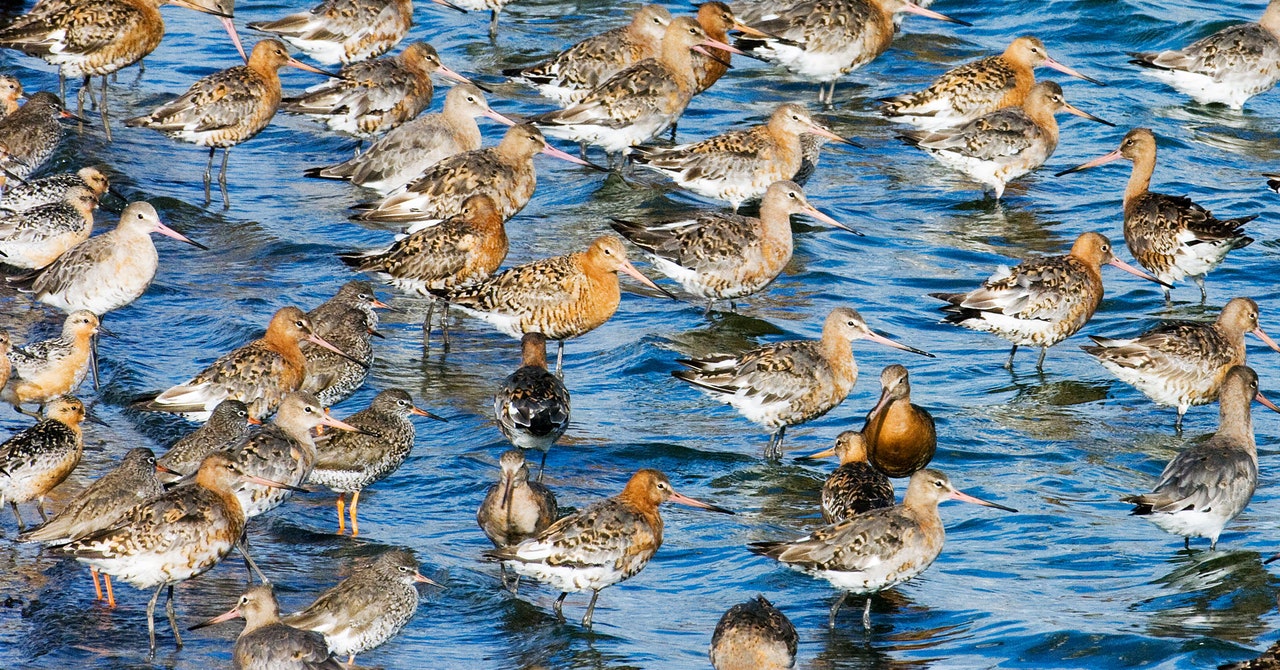
Every night, Alice Cerutti falls asleep to the sound of birds singing on her rice farm in the middle of the Italian countryside. In the morning, the voice of the black-tailed godwit, a bird whose numbers are declining globally, wakes her from sleep—a little harshly. Cerutti imitates the bird’s piercing call over the phone and laughs. “Her sound is a bit annoying,” she says, though she quickly adds, “I really love her.”
Cerutti has turned her 115-hectare rice farm, exactly halfway between Milan and Turin, into a conservation project. During the past decade or so, she and her family have planted thousands of trees, reestablished wetlands, and brought in experts to help study and manage the precious birds that nest in areas Cerutti has set aside for wildlife.
It seems to be working. “We have this amazing and big responsibility,” Cerutti says as she explains that her farm is the last recorded regular nesting site of the black-tailed godwit in Italy. Local researchers found the bird clinging on there even as it disappeared from other locations.
Half of the world’s 10,000-odd bird species are in decline. One in eight faces the threat of extinction. This problem has been worsening for decades, which means scientists have been able to estimate roughly how many fewer birds are around today than, say, half a century ago. The numbers are startling.
There are 73 million fewer birds in Great Britain alone than there were in 1970. Europe has been losing around 20 million every year, says Vasilis Dakos, an ecologist at the University of Montpellier in France—a loss of 800 million birds since 1980. And in the US, just shy of 3 billion individual birds have disappeared in only 50 years.
“We are seeing a meltdown of bird populations,” says Ariel Brunner, director of BirdLife Europe and Central Asia, a conservation NGO. Loss of habitats, the rising use of pesticides on farms, and, yes, climate change—these are among the factors to blame. Even if you are not a birdwatcher, the loss of birds impacts you. Birds regulate ecosystems by preying on insects, pollinating plants, and spreading seeds—by excreting them after eating fruit, for example. We all rely on healthy ecosystems for breathable air, the food we eat, and a regulated climate.
The disappearance of birds is staggering. But Cerutti and others are trying to make a difference. In total, she has earmarked around a quarter of her farmland as a nature reserve. Six and a half hectares, for instance, are now woodland. If you view the farm, called Cascina Oschiena, using the satellite imagery on Google Maps, she says, you’ll see a wedge of dark green trees—alone amid the huge sea of rice fields that belong to her and her neighbors.
Cerutti has dispensed with pesticides and allowed vegetation in wetland areas to regrow. Besides the black-tailed godwits, there are bitterns and lapwings—both also in decline. And no, she doesn’t make as much money as she might if she were driven to maximize profits on the same tract of land. It doesn’t matter. “Not every farmer can do what we’re doing, but I think that it’s important to do something,” she says. A neighbor was recently inspired by Cerutti’s efforts to stop spraying places that border her farm with glyphosate, an incredibly potent herbicide. “I think it’s a great step,” says Cerutti.

